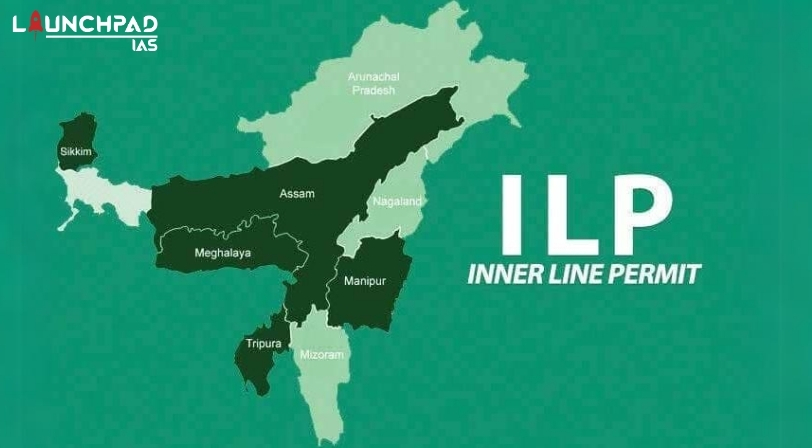About
- Implemented under the Bengal Eastern Frontier Regulation (BEFR) 1873, the Inner Line Permit is an official travel document that allows inward travel of an Indian citizen into a protected/restricted area for a limited period.
- This Act was enacted during the British era to protect the Crown’s own commercial interests by preventing ‘British subjects’ (Indians) from trading within these regions.
- It is a special permit obligatorily required by “outsiders” from other regions of the country to enter the notified states.
- It is issued by the concerned State Government and can be issued for travel purposes solely.
- Foreigners need a Protected Area Permit (PAP) to visit tourist places which are different from ILPs needed by domestic tourists.
- Under the Foreigners (Protected Areas) Order 1958, all areas falling between the ‘Inner Line’, as defined in the said order, and the International Border of the State have been declared as a Protected Area.
- A foreign national is normally not allowed to visit a Protected/Restricted Area unless it is established to the satisfaction of the Government that there are extraordinary reasons to justify such a visit.
- In 1950, the Indian government replaced ‘British subjects’ with ‘Citizens of India’.
- An imaginary line known as the inner line was created to divide between the two communities so that neither party could go beyond the line without a permit from the appropriate authorities.
- Under Section 2 of the Regulation of 1873, the ILP was only applicable to the three North-Eastern States viz. Mizoram, Arunachal Pradesh and Nagaland.
- On 11th December 2020, the President signed the order extending ILP to Manipur, which became the fourth state where the ILP regime is applicable.
Importance of Inner Line Permit
The concept of application of inner line permit to certain States is very important because of the following reasons:
- First, to protect the particular culture and Indigenous tradition of an area.
- To restrict the entry of illegal immigrants to the states with the inner line permit.
- The inner line permit is important to safeguard the demographic dividend of the tribal population in the North-Eastern region.
The inner line permit is of great significance for the protected states in the North-Eastern region as it is the only way possible that helps to control the influx in these states. The influx in the states is considered a threat to the existing tribal community in such states. Also, the indigenous tribes that have their domestic setting in The Hills would be regularly disturbed by the interference of outsiders which may eventually lead to vanishing their existence or culture.
The inner line permit along with saving the demography of North East States also helps to conserve the specific cultures of the tribes residing in the particular area. The constitution of India gives the right to travel to all the citizens of the country but the states having special permission required need to be presented with the required documents for the inner line permit process.


